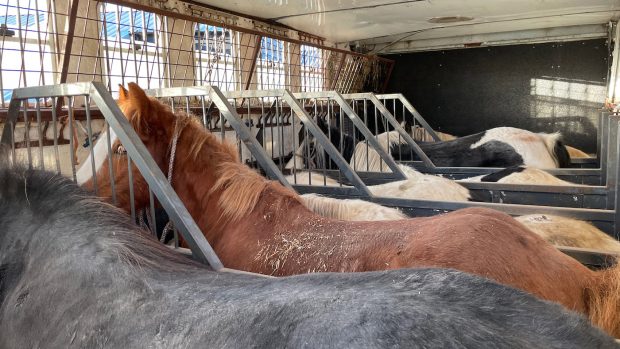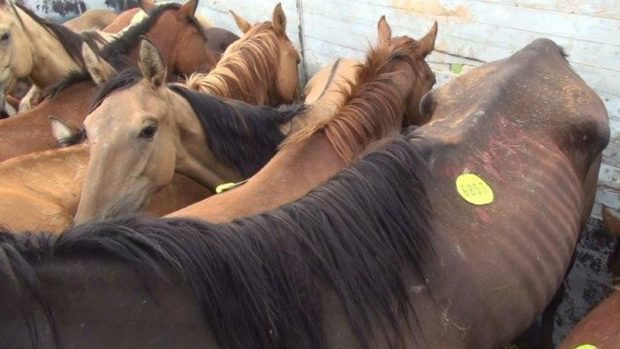My alarm goes off at 7.30am — I’ve had four hours’ sleep. But rather than feel grumpy, as I would at home, my first thought is for that poor mare and foal we saw on the lorry last night. I wonder where they are.
We’re back at the staging post by 10.30am, and spend the morning hanging around in case another lorry comes in, but it doesn’t.
Slovenia gets proactive
This afternoon we drive over the border to Slovenia (which takes two minutes) to meet with Slovenia veterinary inspector Mladen Tomsic. Mladen runs a mobile unit of three vets who do random checks on animal transporters.
He explains to us that it was set up in 2004 when Slovenia joined the EU:
“When Slovenia entered the EU, border stations ceased to work and animals were being transported the whole way across Europe, with Slovenia at the end of this,” he says. “It is a large transit country and we saw the worst cases — animals that had died of thirst, hunger, many injuries.”
The vets have the powers of police to pull lorries over, to check they are in working order, that the animals they are carrying are healthy and all their documentation.
Sadly, he admits the lorries who don’t comply with EU rules re-route via Austria, and that they can’t stay in one place for long, because the drivers are all in radio-contact with each other, and send out warnings if they’re pulled over.
Thursday is a busy day for horses passing through the country: our Slovenian translator, Urska, passed six horse trucks on the way to meet us.
Inspections in progress
We follow Mladen and his colleagues as they work. At a motorway junction, they pull over two trucks — one a four-decker carrying 700 lambs. It is compliant and goes on its way. Then a horse truck, with 19 horses from Poland, on its way to do a 24-hour rest stop in Northern Italy. They are checked and waved on.
Then we move on, to sit by a roundabout in a village. Five minutes goes past before a Polish horse truck comes past. There are 20 horses on board, and they should have a bucket each. Water should be given to them via hosepipes from a tank on the roof, but the vets find two stalls without buckets and another has a cracked hosepipe.
The drivers open the back and one climbs over the back of the horses to put the two extra buckets in.
I watch in absolute horror as one horse goes berserk. The lorry, heavy as it is, rocks from side to side, and as the sound of kicking, scrabbling and panic grows stronger my heart jumps, my hands go up to my face in horror.
I look at Jo, tears in my eyes — her face says it all. This happens.
At the mercy of humankind
Long after the driver has climbed out the horse continues to panic — it just wants to get out of the lorry and this situation — it seems so symbolic to me. These horses can’t do anything about their plight — they are completely at our mercy.
The drivers catch sight of us filming from a distance — they clearly don’t like it and I feel a bit nervous.
Afterwards, Mladen explains the drivers were issued a €400 fine which they paid on the spot — and if they’re caught with malfunctioning watering equipment again the penalty will be more severe.
We drive on, subdued, through Slovenia towards Ljubliana. Just before we’re due to pull off the motorway, having driven fast for three hours, we finally catch up with the horse lorry. It was driving at 90kmph — we overtake and film it as it passes. The driver hoots at us — again I’m nervous they’ll recognise the car in Italy.
We’re shattered and in bed by 10pm.




